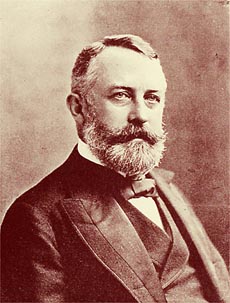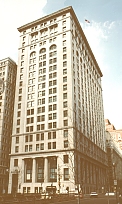Downtown Pittsburgh Buildings
Erected by Henry Clay Frick

Portrait of Henry Clay Frick, from the
Senator John Heinz Pittsburgh Regional History Center.
Master Index for
History of Industrialist, Art Patron, and Philanthropist
Henry Clay Frick
Buildings Erected by Henry Clay Frick
(1902) |
(1916) |
Union Arcade |
Frick Annex |
Buildings Erected With Close Involvement of Henry Clay Frick
(1895-1952) |
(now Pittsburgh Engineers' Building) (1898)
|
